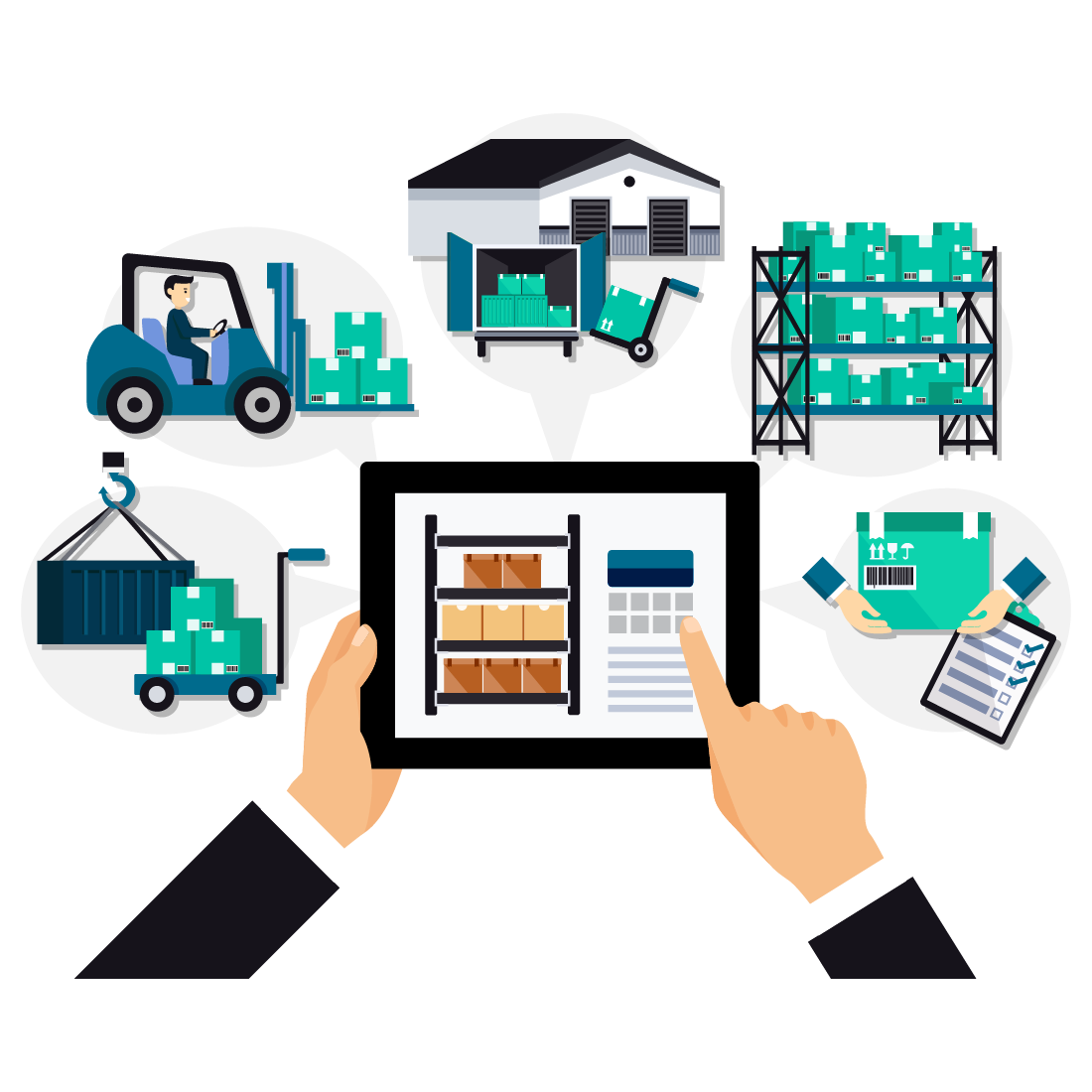Your firm will determine the type of inventory system you require. One thing that holds for all shops is that you do require one. The best way to guarantee accuracy in inventory management is to use a systematic strategy. You can retain up-to-date details of stock or equipment using automated inventory systems. Lack of such records might quickly result in overstocking or understocking problems. Not to mention any potential side effects that either scenario might have.
When a business produces on-demand, inventory management is involved when the customer places an order and lasts until the item is shipped. If not, the process starts when you estimate your requirement and then place orders for the necessary components or raw materials. Analyzing sales patterns and planning the organization of product storage in warehousing are other steps in the process.
In these situations, the inventory management app is as useful as the wheels of the vehicle. For experiencing the smooth flow of your business tactics on the digital market, PackageX is a great platform.
History:
Productivity and mass manufacturing, as well as a better customer at the point of sale, became the key objectives of corporations following the Industrial Revolution. Early in the 1930s, a group at Harvard University created the first contemporary check-out system. Punch cards corresponding to catalog items were used. Punch cards would be read by a computer, which would then transmit the data to the storage, which would bring the item to the client in line. The automated method allowed the machines to monitor inventory and provide billing records. The system turned out to be too costly to construct, but a customized version of it is still in use in certain actual stores. In this method, retailers place product specifications cards on the aisle for clients to choose and take to the supermarket checkout. Usually, this is true with large, expensive, and restricted objects, including pharmaceuticals.
Researchers developed the ancestor of the contemporary bar-coding method in the 1940s and 1950s after merchants realized they deserved a stronger system. It marked objects for sale with ultraviolet ink and a reader. Once more, the program was too complicated and lacked the necessary computing power to function. Their thoughts had not yet been matched by technology.
How Inventory Management Works:
Understanding inventory levels and where it is located in warehouses is the aim of inventory management. The movement of goods from the supplier through the manufacturing process to the customer is tracked by inventory management software. Inventory management in the warehouse keeps track of stock receiving, picking, packaging, and shipment.
The products or materials in inventory are those that a company plans to resell to customers for a profit. Tracking inventory from producers to storage and from these locations to a point of sale is inventory management, a crucial component of the supply chain. Having the right products at the right location at the right time is the aim of inventory management. This necessitates inventory visibility, which entails being aware of when, how much, or where to store stock.
Basic inventory management and inventory management app procedures include:
Buying inventory: Bought and transported to the storehouse or the point of sale, ready-to-sell items are purchased.
Maintaining inventories: Inventory is kept until it is required. Materials or goods are moved around your fulfillment network until they are prepared for shipping.
Inventory profit: The quantity of goods available for purchase is regulated. Orders are filled by pulling finished goods. Customers receive product shipments.
In essence, the systems operate as follows:
To start, barcode scanners or RFIDs let scanners know which products customers are purchasing. By reading the bar codes and transferring the information to the software, the scanners send the information to computers. The software then decodes the bar code’s digits and associates them with the kind of goods they represent. This enables the business to keep track of sales and inventory, whether at the supermarket checkout or with a handheld scanner, so they know what products are doing well.
A real-time image of the situation is provided to management by specialized software, which keeps records of how much merchandise is being purchased, how much is being sold, and how much is still on the shelf and in the warehouse.
Additionally, the software analyses the data and offers suggestions for reordering tactics. They can occasionally be set up to automatically place orders at specific periods. However, it’s crucial to remember that effective systems allow for human decision-making. The technologies offer useful data to support judgments, but managers make the ultimate decision.
The management of inventory in the future:
The way organizations handle inventory is evolving as a result of globalization, technology, and empowered consumers. Operators of supply chains will make use of technology that offers important insights on how to boost performance. They will have insight into areas where automation can give large-scale advantages and will be able to predict aberrations in logistical time and costs when they happen, occasionally through the contribution of PackageX company.

